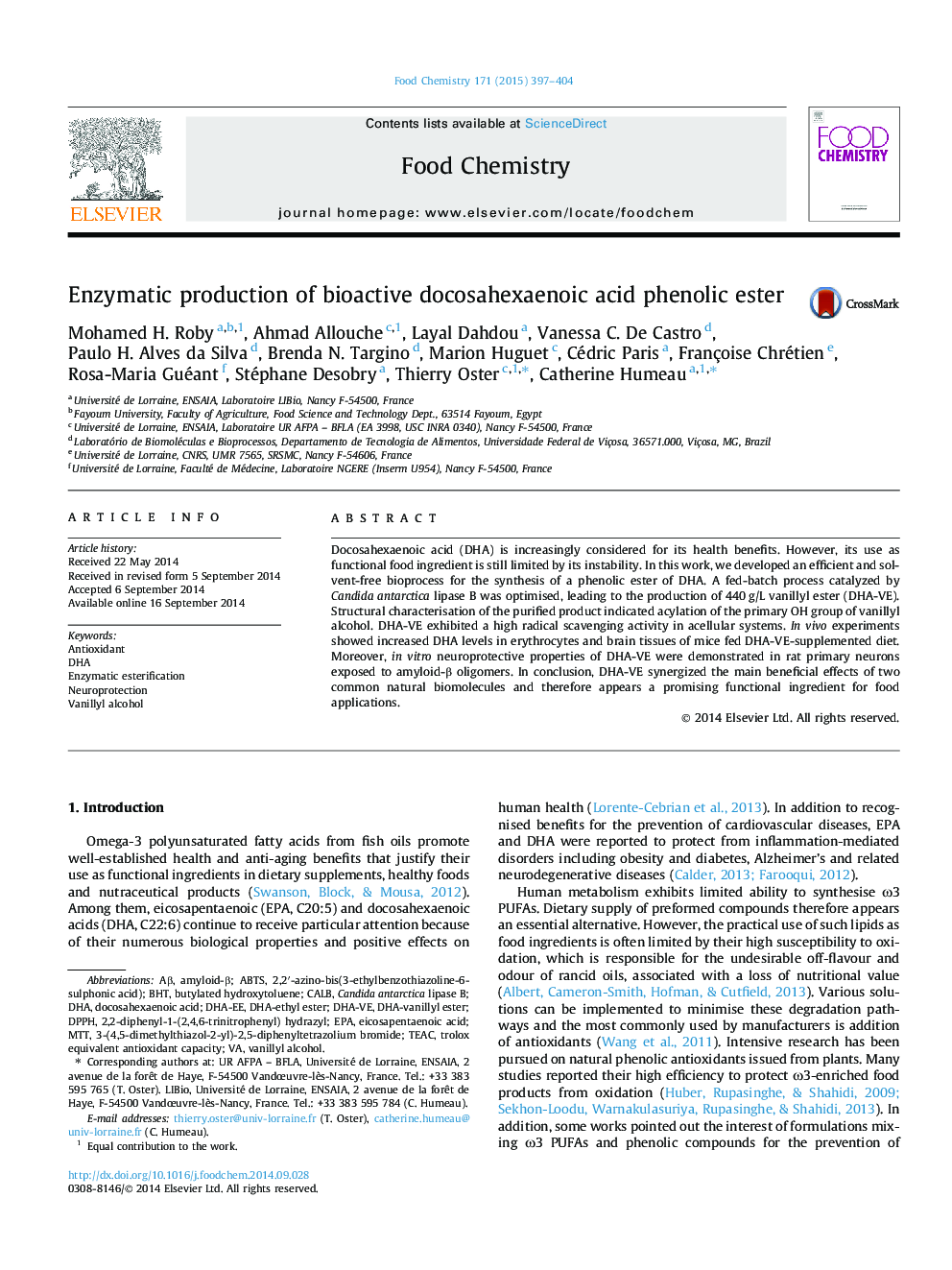| Article ID | Journal | Published Year | Pages | File Type |
|---|---|---|---|---|
| 7594598 | Food Chemistry | 2015 | 8 Pages |
Abstract
Docosahexaenoic acid (DHA) is increasingly considered for its health benefits. However, its use as functional food ingredient is still limited by its instability. In this work, we developed an efficient and solvent-free bioprocess for the synthesis of a phenolic ester of DHA. A fed-batch process catalyzed by Candida antarctica lipase B was optimised, leading to the production of 440 g/L vanillyl ester (DHA-VE). Structural characterisation of the purified product indicated acylation of the primary OH group of vanillyl alcohol. DHA-VE exhibited a high radical scavenging activity in acellular systems. In vivo experiments showed increased DHA levels in erythrocytes and brain tissues of mice fed DHA-VE-supplemented diet. Moreover, in vitro neuroprotective properties of DHA-VE were demonstrated in rat primary neurons exposed to amyloid-β oligomers. In conclusion, DHA-VE synergized the main beneficial effects of two common natural biomolecules and therefore appears a promising functional ingredient for food applications.
Keywords
Related Topics
Physical Sciences and Engineering
Chemistry
Analytical Chemistry
Authors
Mohamed H. Roby, Ahmad Allouche, Layal Dahdou, Vanessa C. De Castro, Paulo H. Alves da Silva, Brenda N. Targino, Marion Huguet, Cédric Paris, Françoise Chrétien, Rosa-Maria Guéant, Stéphane Desobry, Thierry Oster, Catherine Humeau,
